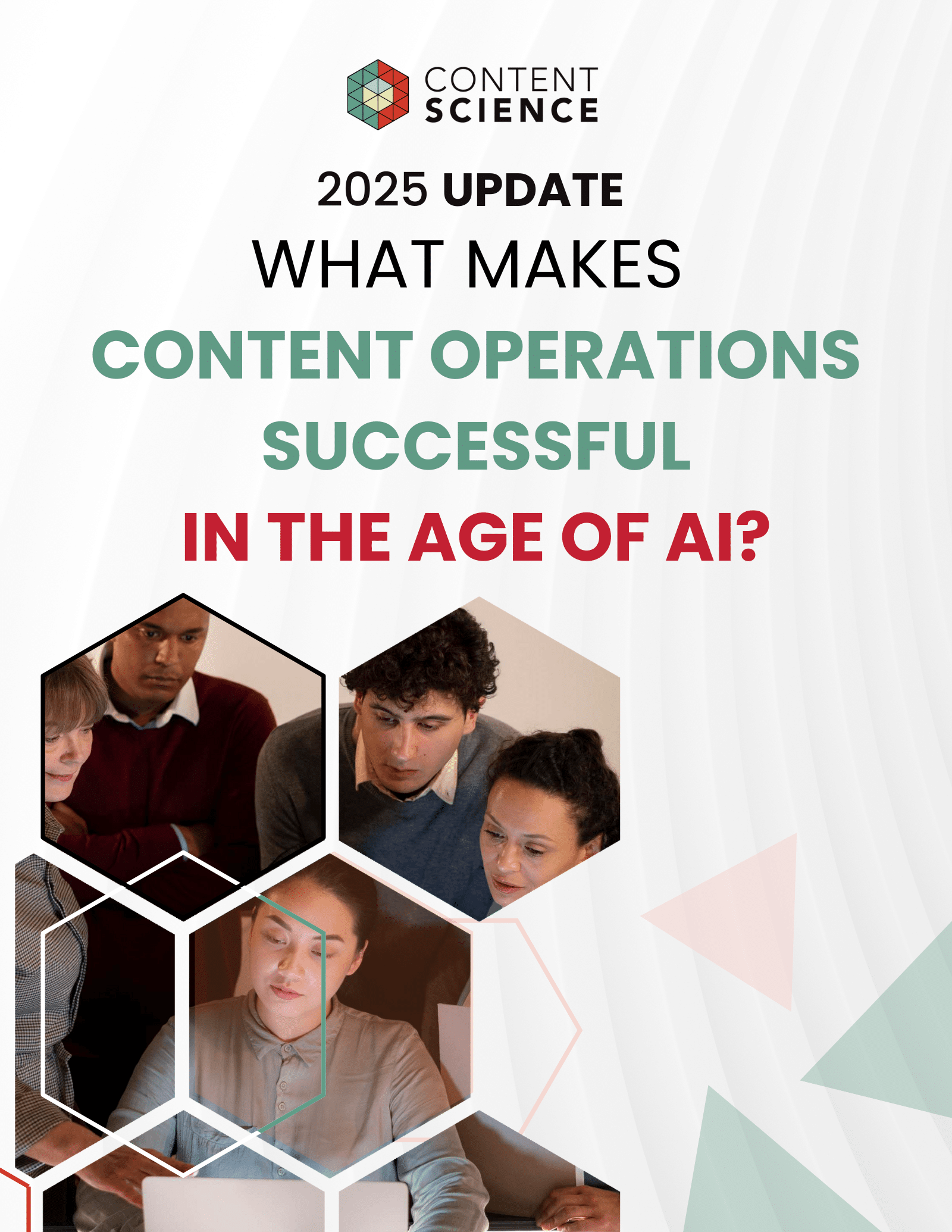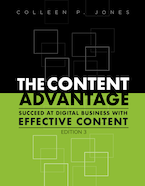
When I talk with organizations about improving their content approach, one word often makes people pause: governance.
It sounds formal—even intimidating—but it’s actually one of the most powerful levers for content success. In my work with many organizations and in The Content Advantage, I define content governance as the rules of the road for your content operations and systems.
It’s the combination of things like policies, roles, standards, workflows, and decision frameworks that keep your content high quality, consistent, reliable, scalable, and effective.
Governance ensures that as you plan, create, deliver, and sustain content, you maintain both clarity and control—even as channels multiply and demand for content intensifies. It’s the connective tissue that helps your content system evolve without chaos.
In practice, content governance defines questions like:
- Who can create or edit which types of content?
- When and how should content be reviewed, updated, or archived?
- What standards—for quality, voice, accessibility, metadata, compliance, and more—apply across channels?
- How do we enforce those standards as we scale?
- What dashboards or metrics show whether content is healthy and compliant?
Good governance doesn’t stifle creativity; good governance channels creativity. Without governance, even the most inspired content strategy will fall apart over time and as it scales.
What Are the Benefits of Good Content Governance?
Strong governance drives benefits across efficiency, risk management, brand integrity, and resilience. Our research confirms that governance is a defining factor in mature, high-performing content operations and overall content success. Let’s walk through some specific benefits.
Quality, Consistency, and Trust
Shared standards—tone, structure, metadata, accessibility—make content cohesive and dependable. That consistency builds trust and strengthens brand credibility.
Operational Efficiency and Scale
Organizations with more mature content operations use more diverse and formal governance techniques—and are far less likely to rely on ad hoc meetings to make decisions. Formal governance streamlines workflows and reduces rework, making scale sustainable.
Onboarding and Integration
As organizations grow, content creation spreads across teams, regions, and functions. Our research finds that organizations at higher operational maturity levels are less likely to use a decentralized governance structure and more likely to use an integrated one. This coordination makes it easier for new contributors to align quickly and effectively.
Risk Mitigation and Compliance
Without governance, outdated or inaccurate content can linger unnoticed—sometimes with costly consequences. Strong approval and review systems catch those risks before they become crises.
Scalable Change Management
When strategy, standards, or technology evolve, governance provides a reliable way to roll out changes consistently. Our research shows that complex organizations struggle most with workflows, standards, and structure, making governance essential for staying adaptable.
What Are the Challenges to Implementing Content Governance?
Of course, even with clear benefits, governance can be hard to implement. Here are some of the most common challenges we see and what our research reveals about overcoming them.
Cultural Resistance and Change Fatigue
Governance often gets labeled as “red tape.” In less mature operations, where teams rely on informal meetings and ad hoc decisions, formal governance can feel like a loss of flexibility. But over time, structured governance actually gives teams more freedom—freeing them from chaos to focus on creativity and quality.
Decentralized Authority and Boundaries
When governance is spread too thin, accountability gets lost. Our research found that organizations at higher levels of success are less likely to depend on decentralized governance structures. Instead, they clarify and integrate ownership, while still allowing local flexibility. One technique for doing so is establishing a center of content excellence.
Balancing Flexibility vs. Control
Set rules too rigidly, and contributors rebel; too loosely, and you lose consistency. The most mature operations find a middle ground, often using automation and embedded guidance to balance structure with agility.
Resource Constraints and Adoption
Governance requires care and feeding. Teams that treat it as “extra work” to do in their nonexistent spare time rarely sustain it. Those that fund governance as an ongoing operational function see lasting results.
Legacy Content and Debt
Introducing governance after years of ad hoc publishing often reveals massive content debt—duplicates, outdated pages, inconsistent structures. Governance helps prioritize cleanup and prevent new debt from accumulating.
How Is AI Affecting Content Governance?
AI is changing content operations — and governance has to evolve with it.
In our content operations research, we find that organizations with higher content maturity are more likely to be updating their governance to scale AI use. That means defining new review steps, updating standards, using new tools, and building transparency into how AI-generated content is used. Here’s a quick rundown of opportunities and complications
Opportunities for AI to Improve Governance:
- Automated compliance and accessibility checks
- Metadata enrichment and SEO optimization
- Lifecycle automation (flagging content for update or retirement)
- Predictive analytics for risk or performance
AI Risks that Complicate Governance:
- Inaccurate or biased outputs
- Intellectual property uncertainty
- Lack of transparency about AI-generated content
- Overreliance on automation without human review
AI doesn’t eliminate governance; AI makes governance indispensable. The key is to evolve governance to manage both human and machine contributions responsibly.
What Will Be the Long-Term Impact of AI on Content Governance?
Looking ahead, AI will drive a shift from rigid governance to intelligent guardrails, or real-time guidance built into tools and workflows.
Governance will become more dynamic: AI can flag emerging issues, recommend updates to policies, or automate audits across channels. Centers of content excellence will increasingly lead these efforts, balancing automation with ethical oversight and human judgment.
Ultimately, AI will make governance more adaptive—but only if we design governance systems to learn, not just to enforce.
Closing Thoughts
Content governance isn’t bureaucracy. Content governance is strategy in action. Governance doesn’t slow your organization down. It keeps your organization going in the right direction with content, at scale.
As I’ve seen through years of research and consulting, governance connects vision to execution, and ensures your content doesn’t just exist — it performs. And our research confirms that the most successful organizations are those investing in formal governance techniques, integrated governance structure, and a combination of tools to support AI responsibly.
Events, Resources, + More
New Data: Content Ops + AI
Get the latest report from the world's largest study of content operations. Benchmarks, success factors, commentary, + more!
The Ultimate Guide to End-to-End Content
Discover why + how an end-to-end approach is critical in the age of AI with this comprehensive white paper.
The Content Advantage Book
The much-anticipated third edition of the highly rated book by Colleen Jones is available at book retailers worldwide. Learn more!
20 Signs of a Content Problem in a High-Stakes Initiative
Use this white paper to diagnose the problem so you can achieve the right solution faster.







Comments
We invite you to share your perspective in a constructive way. To comment, please sign in or register. Our moderating team will review all comments and may edit them for clarity. Our team also may delete comments that are off-topic or disrespectful. All postings become the property of
Content Science Review.